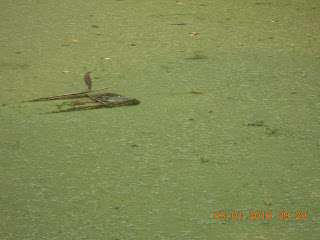The Thermal Woderland-Rotorua,New Zealand
 The city of Rotorua is around 225
Km away from the centre of Auckland,NZ.The Inter City Bus took a little more
than 4 hours to reach there. It was a sunny day and the well laid city roads
with blooming flowers in their
boulevards were looking elegant . We walked down to our hotel ear the lake
front through the beautiful
Tutanekai Street which is lined with around two dozen eateries’ of different nationalities including
Indian. The city was in a festive mood Despite the sulfurous smell hanging in the air we all liked
the place at the first sight.
The city of Rotorua is around 225
Km away from the centre of Auckland,NZ.The Inter City Bus took a little more
than 4 hours to reach there. It was a sunny day and the well laid city roads
with blooming flowers in their
boulevards were looking elegant . We walked down to our hotel ear the lake
front through the beautiful
Tutanekai Street which is lined with around two dozen eateries’ of different nationalities including
Indian. The city was in a festive mood Despite the sulfurous smell hanging in the air we all liked
the place at the first sight.
The earliest Maori visitors who hailed
from Hawaii around 800 years back perhaps found two lakes joined together
through a Gulf. “Roto” means lake and “Rua” means two. So came the name of the
Place and also the name of the biggest lake here. Rotorua , as the guide book
reminds, sits on top of most violent segment of the Taupo
Volcanic Zone. Violent volcanic activities over centuries have created
geo-thermal wonders all over the district. Wherever one turns in this extraordinary area, the earth
bubbles, boils, spits and oozes. The whole region has 16 natural lakes (some of
which are fuming),cold and boiling
pools of mud ,collapsed craters, water and steaming fumaroles.
Our hotel was located just on the
bank of Lake Rotorua and centre of the city. We had easy access to the Government
Gardens and Museum which is housed
in a building which previously was
a Bath House designed along the lines of European Spas. Presently it
demonstrated the glorious past and evolution of Maori art, culture and customs.
It also showed a short movie describing the most destructive volcanic event in New Zealand’s recorded history which
occurred here on June 10th,1886.
Next day a prefixed shuttle bus
took us to Wai-O-Tapu which has
the largest area of surface thermal activity of any hydrothermal system in the Taupo
Volcanic Zone. Wai-O-Tapu while translated in English means Sacred
Waters. The early Maori residents of this region believed throughout ages on
the healing power of the water of the hot spring here. Beneath the ground of
this area runs a system of streams which are heated by magma left over from
earlier eruptions. The water is hot up to 300 degrees Celsius and absorbs
minerals out of the rocks. The wide range of colors in the area are all natural
and are due to different mineral elements.
 Our starting point at Wai-O-Tapu
was the famous Lady Knox Geyser. It came into operation around 150 years back.
As we learnt from the Guide who briefly lectured about it this it used to erupt
erratically beforehand. Subsequently the authorities thought it best to control
the eruption by some chemical process. We saw it erupted at around 10.15 am.
The flow of fuming water reached a height of around 20 meters.
Our starting point at Wai-O-Tapu
was the famous Lady Knox Geyser. It came into operation around 150 years back.
As we learnt from the Guide who briefly lectured about it this it used to erupt
erratically beforehand. Subsequently the authorities thought it best to control
the eruption by some chemical process. We saw it erupted at around 10.15 am.
The flow of fuming water reached a height of around 20 meters.
We walked through a walkway as
defined in a map provided there. It took around 75 minutes for us to complete
exploring the spectacular nature. On our way we found craters of different
colors and sizes. They were upto 50 meters in diameters and upto 20 meters
deep. Several contained hot water springs and extensive sulphur deposits. Along
our way there were spectacular pools and the contents were differently colored.
As if to do justice to their colorful appearnces and peculiar sizes they were
poetically named. There were The Champagne pool, The Oyster pool, Opal pool and
The Artist’s Palette . Sometimes the pools are fairly large, up to 65m in
diameter and around 62 m in depth. They all looked beautiful no doubt but very
hot and fuming always.
 To me the thermal wonders of
Rotorua appeared splendid and surprisingly beautiful dangerous. But at the same time it all through reminded the dangerous and violent volcanic eruptions which caused the beauty here. It always came to my mind the observations of the experts that there would certainly be further eruptions in this area in the future.
To me the thermal wonders of
Rotorua appeared splendid and surprisingly beautiful dangerous. But at the same time it all through reminded the dangerous and violent volcanic eruptions which caused the beauty here. It always came to my mind the observations of the experts that there would certainly be further eruptions in this area in the future.This area in fact is a beautiful hell but hell no doubt.




Comments
Rudrababu? He must be taking you to another wonderland. Envious-that's me. BTW isin't it time to drop back to your old and dark Kol?
Keep blogging.
Amit
I haven't seen this English Blog earlier. Inshort you have given such a vivid description of this wonderful area that is entirely absorbing. This reminds me about the famous Yellowstone National Park in USA, which i heard from others visit & exquisite pictures. I amreally glad that i have not missed this part of your blog.
Guptoda